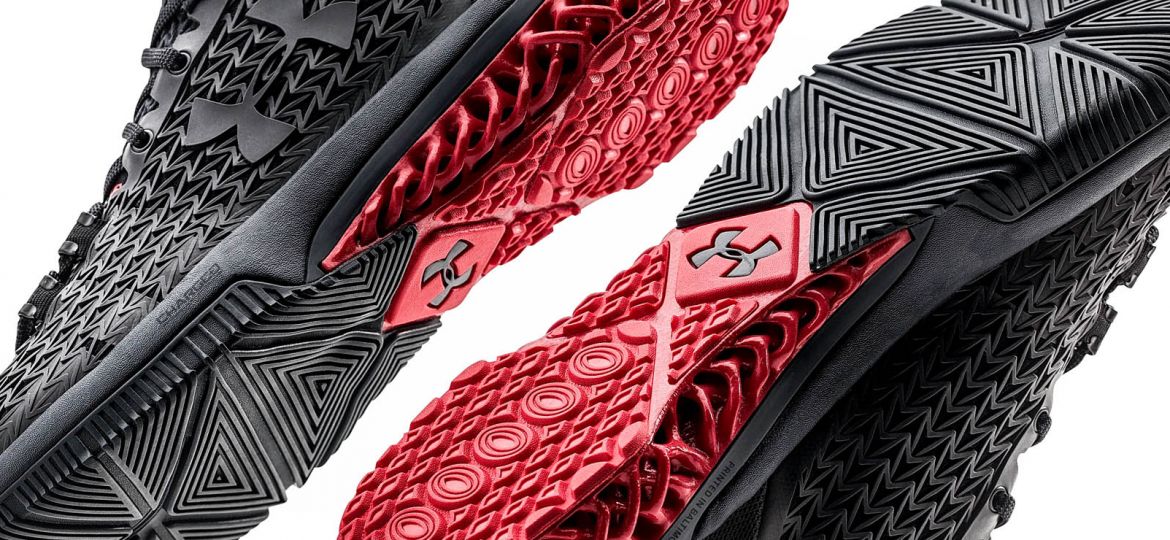
WHY THIS MATTERS IN BRIEF
The rise of a new breed of creative machines is helping companies design and iterate new products at an accelerating rate, couple these together with new manufacturing techniques and we’ll soon be on the cusp of another manufacturing revolution.
The next pair of trainers you buy from Under Armour, the American sports apparel giant, might have been printed, not stitched. And be designed by an AI.
A few months ago Under Armour and AutoDesk teamed up to craft a new set of athletic kicks called Architech, and they’re almost the perfect representation of just how much technology has progressed in the two short decades since the company’s founding.
The goal of the project was to create a pair of trainers that succeeded at being comfortable, durable, lightweight and supportive – something, that bearing in mind that these trainers will be work by hulks of men isn’t as easy as it sounds. Firstly UA needed to use a new structure for the midsole and so the company settled on a lattice structure, which was inspired by tree roots – principally because they’re often small, compact but more importantly because they support a tremendous weight, namely the tree. And once they had their base concept they plugged it into Autodesk’s generative design program, an artificial intelligence (AI) creative machine program that uses machine learning to iterate, tweak and test new innovative designs in a thousandth of the time that it would have taken a human to do. The AI takes into account everything, such as durability, flexibility, and weight, among other elements that may change or alter what the final design looks like.
It’s not the first time that generative design, a new branch of AI’s capable of “innovation,” or perhaps a better word for now is iteration. Late last year the same program and same techniques were used to design everything from chairs to jet engines – and the results were impressive.
Once the final design was in the can the team then decided to send it to a 3d printer – the design was too intricate and complex for traditional manufacturing methods, and even if UA had been able to modify their fabrication processes then the costs would have been prohibitive – especially for what was essentially a proof of concept run.
“The biggest issue here is that the generatively designed lattice structure is highly complex and best suited to 3D printing as the fabrication technique,” said Mark Davis, senior director of design research at AutoDesk, “traditional manufacturing processes like injection moulding typically don’t work well for the complex structures that come out of a generative design. 3D printing gives us more flexibility to produce shoes that benefit from the lattice – in this case it provides greater stability and cushioning than conventional designs.”
The gallery was not found!
The 3D printed elements are found not just in the midsole either, they also appear in the heel and the upper area of the shoe, where the “Clutchfit Auxetic” design is adapted to the shape and movement of the wearer to provide a precise fit.
The UA Architech isn’t the first commercially available 3D printed performance trainer – Adidas, New Balance and Nike have also paraded onto the field recently – but it’s the first one that combines 3D printing with AI generative design, and so far, judging by the success of it this is going to be the first trainer in a long line of generative design inspired apparel.
UA’s new shoes, and the Autodesk software used to design them will no doubt kick off a new 3D printing and AI arms race as companies look to harness the twin technologies for market advantage. But the story doesn’t end there – add in the potential for true personalisation – not just picking out the size and colour of a shoe, but getting a real, custom fit, like the one supplied by Wiivv and suddenly you’re entering into a new era of custom, personalised apparel, and we’re not just talking about trainers, for athletes of all experience levels.
“One of the real benefits of 3D printing and generative design is that it will allow for an era of mass customization,” says Davis said, “meaning that every individual consumer could have a custom designed shoe just for them, based on their height, weight, athletic needs.”
While he holds that the largest value for 3D printing will be in commercial and industrial uses, Davis did say that his company’s tools could play a role in increasing consumer choice. He explained that a person could use the same generative design technology that crafted the lattice midsole for the UA Architech to produce a shoe completely designed for an individual wearer.
“We imagine that the printing itself will still likely occur in a commercial setting for the foreseeable future, but at some point in the future it could in theory be done at home,” he said. And while you can’t print out UA’s first set of 3D printed shoes at home yet that day will come, however, in the meantime it’s also worth saying that it’s these types of technologies which will help bring manufacturing back to the West, and that, just like the rise of creative machines, could also be a paradigm shift.

















[…] Under Armour ha creado una zapatilla con una combinación ideal de flexibilidad y estabilidad para el entrenamiento atlético, inspirada en las raíces de los árboles. El diseño generativo dio lugar a una geometría poco convencional que se imprimió en 3D en unas zapatillas probadas por más de 80 atletas en una fracción del tiempo que habría llevado antes. […]